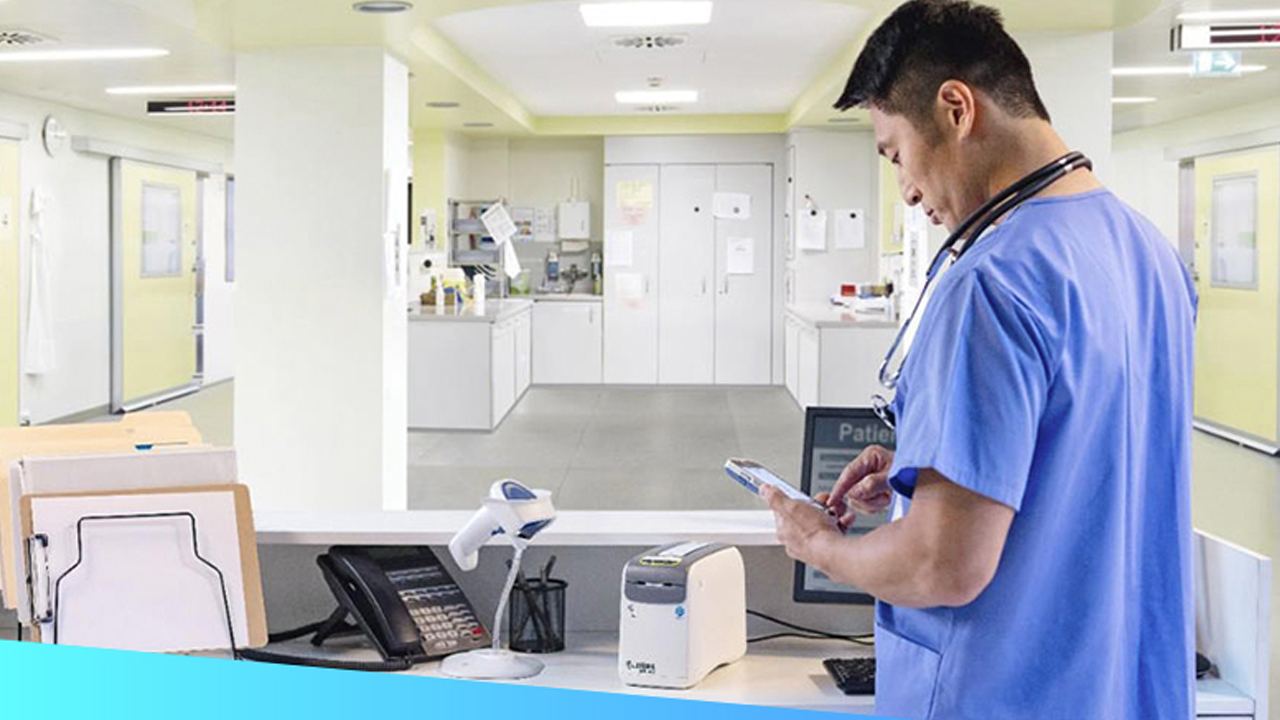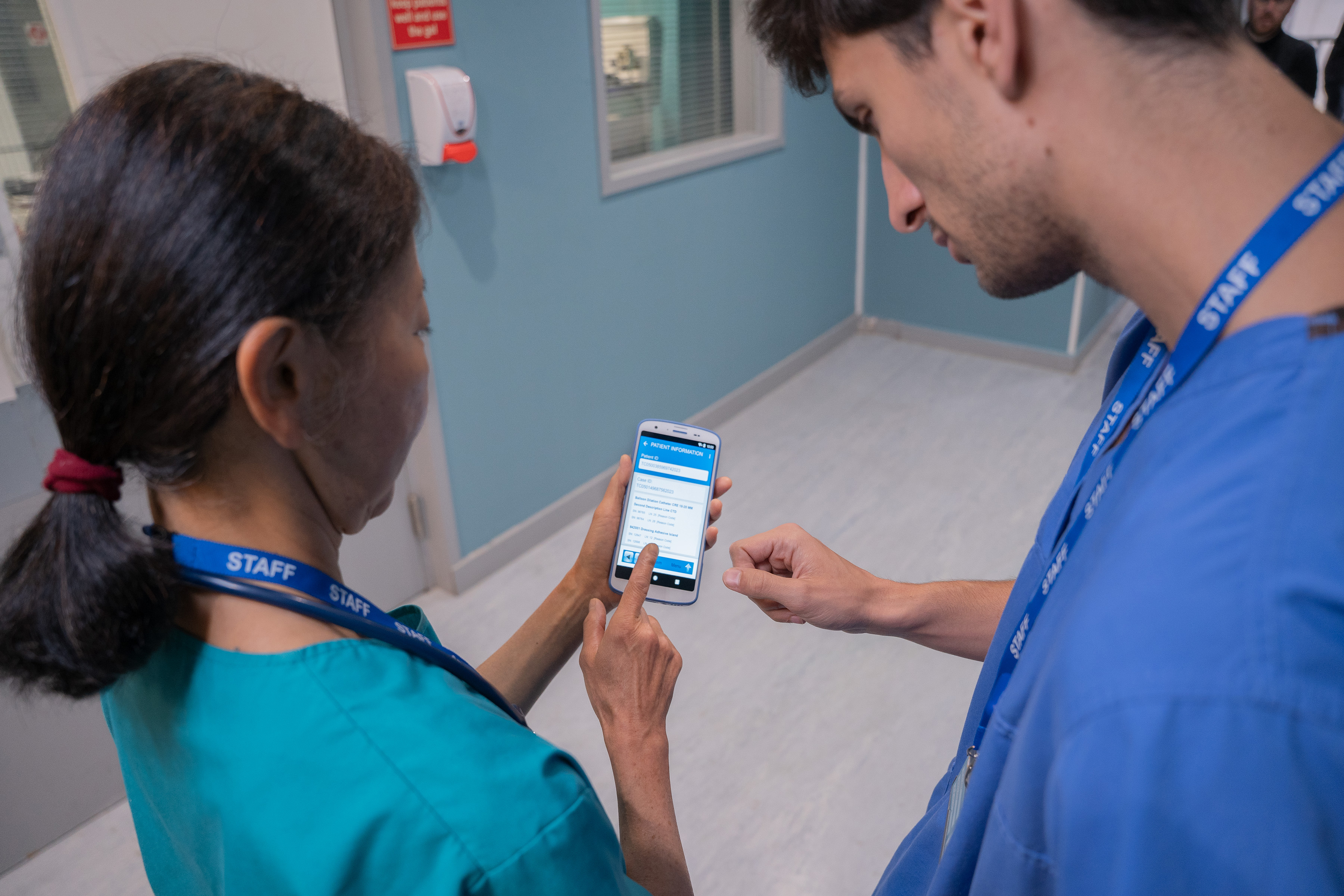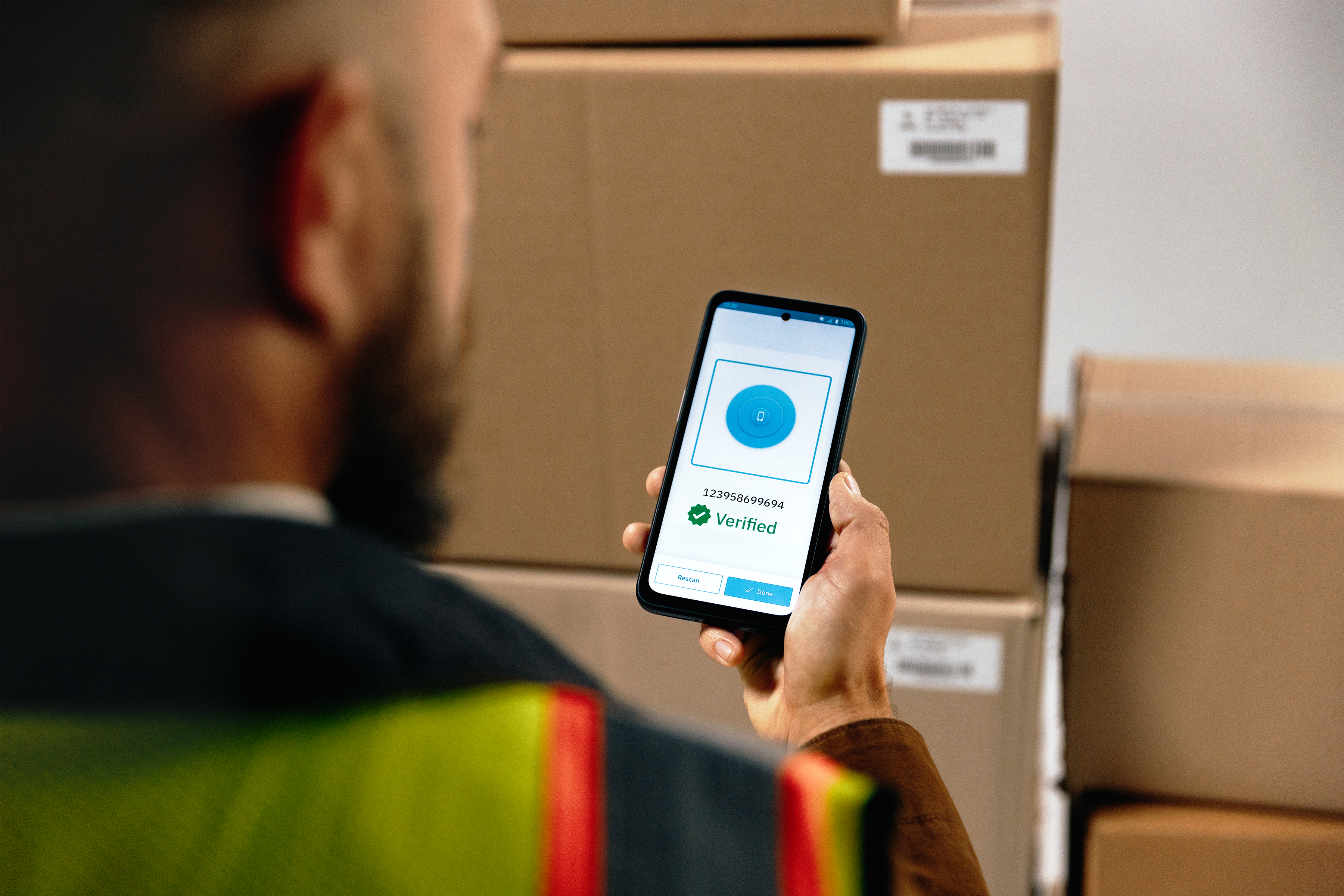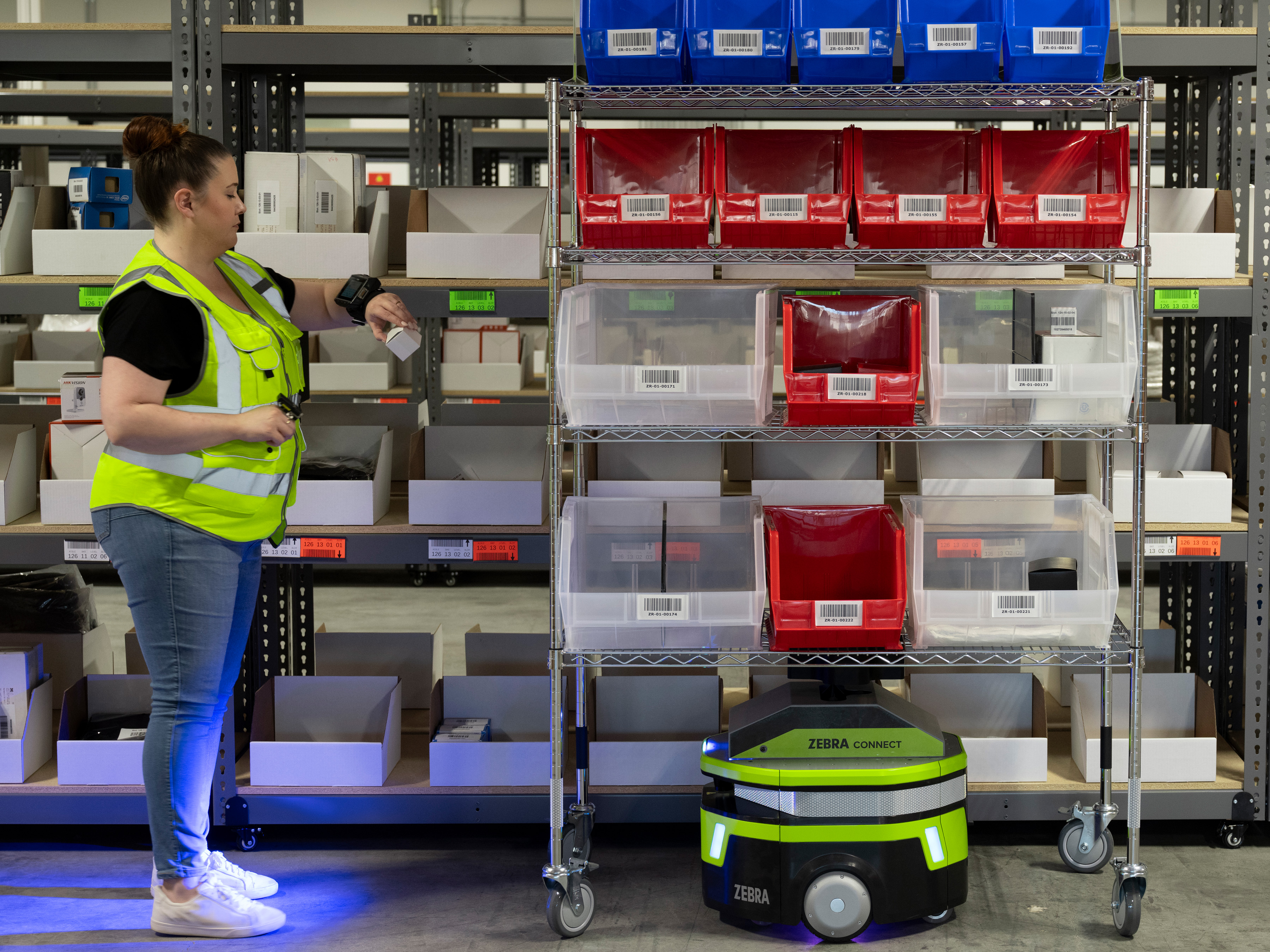Transform retail operations with Zebra’s retail technology solutions, featuring hardware and software for improving inventory management and empowering teams.
Streamline operations with Zebra’s healthcare technology solutions, featuring hardware and software to improve staff collaboration and optimize workflows.
Enhance processes with Zebra’s manufacturing technology solutions, featuring hardware and software for automation, data analysis, and factory connectivity.
Zebra’s transportation and logistics technology solutions feature hardware and software for enhancing route planning, visibility, and automating processes.
Learn how Zebra's public sector technology solutions empower state and local governments to improve efficiency with asset tracking and data capture devices.
Zebra's hospitality technology solutions equip your hotel and restaurant staff to deliver superior customer and guest service through inventory tracking and more.
Zebra's market-leading solutions and products improve customer satisfaction with a lower cost per interaction by keeping service representatives connected with colleagues, customers, management and the tools they use to satisfy customers across the supply chain.
Empower your field workers with purpose-driven mobile technology solutions to help them capture and share critical data in any environment.
Zebra's range of Banking technology solutions enables banks to minimize costs and to increase revenue throughout their branch network. Learn more.
Zebra's range of mobile computers equip your workforce with the devices they need from handhelds and tablets to wearables and vehicle-mounted computers.
Zebra's desktop, mobile, industrial, and portable printers for barcode labels, receipts, RFID tags and cards give you smarter ways to track and manage assets.
Zebra's 1D and 2D corded and cordless barcode scanners anticipate any scanning challenge in a variety of environments, whether retail, healthcare, T&L or manufacturing.
Zebra's extensive range of RAIN RFID readers, antennas, and printers give you consistent and accurate tracking.
Choose Zebra's reliable barcode, RFID and card supplies carefully selected to ensure high performance, print quality, durability and readability.
Zebra's location technologies provide real-time tracking for your organization to better manage and optimize your critical assets and create more efficient workflows.
Zebra's rugged tablets and 2-in-1 laptops are thin and lightweight, yet rugged to work wherever you do on familiar and easy-to-use Windows or Android OS.
With Zebra's family of fixed industrial scanners and machine vision technologies, you can tailor your solutions to your environment and applications.
Zebra’s line of kiosks can meet any self-service or digital signage need, from checking prices and stock on an in-aisle store kiosk to fully-featured kiosks that can be deployed on the wall, counter, desktop or floor in a retail store, hotel, airport check-in gate, physician’s office, local government office and more.
Adapt to market shifts, enhance worker productivity and secure long-term growth with AMRs. Deploy, redeploy and optimize autonomous mobile robots with ease.
Discover Zebra’s range of accessories from chargers, communication cables to cases to help you customize your mobile device for optimal efficiency.
Zebra's environmental sensors monitor temperature-sensitive products, offering data insights on environmental conditions across industry applications.
Enhance frontline operations with Zebra’s AI software solutions, which optimize workflows, streamline processes, and simplify tasks for improved business outcomes.
Zebra Workcloud, enterprise software solutions boost efficiency, cut costs, improve inventory management, simplify communication and optimize resources.
Keep labor costs low, your talent happy and your organization compliant. Create an agile operation that can navigate unexpected schedule changes and customer demand to drive sales, satisfy customers and improve your bottom line.
Drive successful enterprise collaboration with prioritized task notifications and improved communication capabilities for easier team collaboration.
Get full visibility of your inventory and automatically pinpoint leaks across all channels.
Reduce uncertainty when you anticipate market volatility. Predict, plan and stay agile to align inventory with shifting demand.
Drive down costs while driving up employee, security, and network performance with software designed to enhance Zebra's wireless infrastructure and mobile solutions.
Explore Zebra’s printer software to integrate, manage and monitor printers easily, maximizing IT resources and minimizing down time.
Make the most of every stage of your scanning journey from deployment to optimization. Zebra's barcode scanner software lets you keep devices current and adapt them to your business needs for a stronger ROI across the full lifecycle.
RFID development, demonstration and production software and utilities help you build and manage your RFID deployments more efficiently.
RFID development, demonstration and production software and utilities help you build and manage your RFID deployments more efficiently.
Zebra DNA is the industry’s broadest suite of enterprise software that delivers an ideal experience for all during the entire lifetime of every Zebra device.
Advance your digital transformation and execute your strategic plans with the help of the right location and tracking technology.
Boost warehouse and manufacturing operations with Symmetry, an AMR software for fleet management of Autonomous Mobile Robots and streamlined automation workflows.
The Zebra Aurora suite of machine vision software enables users to solve their track-and-trace, vision inspection and industrial automation needs.
Zebra Aurora Focus brings a new level of simplicity to controlling enterprise-wide manufacturing and logistics automation solutions. With this powerful interface, it’s easy to set up, deploy and run Zebra’s Fixed Industrial Scanners and Machine Vision Smart Cameras, eliminating the need for different tools and reducing training and deployment time.
Aurora Imaging Library™, formerly Matrox Imaging Library, machine-vision software development kit (SDK) has a deep collection of tools for image capture, processing, analysis, annotation, display, and archiving. Code-level customization starts here.
Aurora Design Assistant™, formerly Matrox Design Assistant, integrated development environment (IDE) is a flowchart-based platform for building machine vision applications, with templates to speed up development and bring solutions online quicker.
Designed for experienced programmers proficient in vision applications, Aurora Vision Library provides the same sophisticated functionality as our Aurora Vision Studio software but presented in programming language.
Aurora Vision Studio, an image processing software for machine & computer vision engineers, allows quick creation, integration & monitoring of powerful OEM vision applications.
Adding innovative tech is critical to your success, but it can be complex and disruptive. Professional Services help you accelerate adoption, and maximize productivity without affecting your workflows, business processes and finances.
Zebra's Managed Service delivers worry-free device management to ensure ultimate uptime for your Zebra Mobile Computers and Printers via dedicated experts.
Find ways you can contact Zebra Technologies’ Support, including Email and Chat, ask a technical question or initiate a Repair Request.
Zebra's Circular Economy Program helps you manage today’s challenges and plan for tomorrow with smart solutions that are good for your budget and the environment.
The Zebra Knowledge Center provides learning expertise that can be tailored to meet the specific needs of your environment.
Zebra has a wide variety of courses to train you and your staff, ranging from scheduled sessions to remote offerings as well as custom tailored to your specific needs.
Build your reputation with Zebra's certification offerings. Zebra offers a variety of options that can help you progress your career path forward.
Build your reputation with Zebra's certification offerings. Zebra offers a variety of options that can help you progress your career path forward.

Prescribing the Right Tech to Modernise Healthcare
There is a wealth of reporting to indicate that the global healthcare sector is under-resourced. And it is widely accepted by healthcare professionals that many inefficiencies still need to be addressed within facilities and the supply chain alike. Unfortunately, these issues are currently contributing to medical errors – human errors – that are being quantified by the number of lives lost. The adoption of intelligent solutions within the healthcare community has been slow compared to other industries such as retail and logistics. Ironic considering healthcare could probably benefit the most! It’s hard to believe that, despite living in a connected world with Big Data and Internet of Things (IoT) technology, a doctor or nurse is not able to access everything and everyone they need to provide an optimal level of care to every patient at the right time, every time.
Many processes are still very arduous and manual throughout the patient journey, from the way identification verification occurs upon admission, to sample and specimen processing, drug administration and eventual discharge and billing. Prescribing the right technology to modernise key clinical workflows is a big investment and challenge for many healthcare providers, but the solutions are out there. (And the process is often not as complex as it may be perceived to be – if you partner with a solution provider that understands both the technologies you need and how they need to be uniquely commissioned within healthcare environments.)
Minimising clinical challenges
Healthcare communication workflows, critical to the patient journey, need to be secure, fast and reliable. That is why 71 percent of hospitals identify mobile communication as a priority. A mobile clinician is an empowered clinician. It is essential to equip nurses, physicians and other staff with a rugged mobile computing device (like a tablet) that enables them to read electronic medical records, view and create media such as videos and photos, contact colleagues or respond to alarms on the go. In the future, it’s likely that these devices will be used to perform tests such as blood pressure and temperature readings, too. But the communication workflow is just one important consideration that must be made when manufacturers are designing – and you are procuring – devices that are “purposely built”, which I’ll discuss more in a moment.
Another critical consideration when evaluating the value of certain technologies is the role they could play in managing the many thousands of assets a single site may own, from heart monitors to wheelchairs. Manual inventory is a painstakingly slow, inaccurate process leading to unnecessary purchase, rental or loss/theft of equipment – a huge drain on hospital budgets. RFID technologies have proven to be an effective tool for asset management and tracking, as well as locating biomedical devices for emergency or general use. They also make it easier to maintain proper inventory levels, identify performance issues and complete repairs as needed.
At the same time, allocating beds (including specialist beds and cots) would become much more manageable and efficient if you had the ability to analyze ward occupancy status and bed condition. Of course, tracking medication administered to a patient (scanning the packaging barcode, for example) is beneficial to inform stock levels and determine the costs associated with that patient for billing. Medicine tracking also creates a precise record of patient care – critical in the case of drug recall.
In other words: RFID and mobile computing technologies that are supported by barcode technology have become a cornerstone to modernising healthcare. They also need to be adopted in healthcare settings to meet national and global standards, including those set by the World Health Organization (WHO) and government-defined regulations such as the Falsified Medicines Directive.
Lifesaver: barcode technology for medical purposes
A patient’s barcode wristband is so much more than a means of identification– it’s a lifesaver. Medical error is the third-leading cause of death behind heart disease and cancer, and a barcode enables the caregiver to provide the “five rights” at the bedside – right patient, right medication, right dose, right time and right method of administration. Under time pressure, staff may skip steps (either accidentally or intentionally) in manually confirming a patient’s ID and updating records, but barcode wristbands capture critical information about a patient (far more than could ever be written on one!) available at every scan.
Imagine you’re a busy, stressed or fatigued healthcare professional. Take a look at this graphic of patient sample tubes with very similar labels - could you identify the unique tube from the selection?
Did you get it right? How long did it take you?
Evidence suggests that printing and labeling specimens at the bedside dramatically reduces mislabeling and meets ‘positive patient ID’ standards. Redraws, retesting and additional treatment that result from sample errors cost the healthcare industry an estimated $200 million to $400 million per year. As consumers, we can track parcels in real time. So, hospitals should be doing the same with clinical consignments to speed up diagnosis and treatment…for the right patients.
Would digitalization of the healthcare system replace human communication (i.e. the ‘bedside manner’ element)? I don’t think so. Barcodes don’t need to replace the dialogue; they serve to greatly enhance it and act as back up. If the patient is a child or asleep, you won’t need to rely on them to confirm an ID, allergies or drugs administered – it will be there in black and white. 2D barcodes are so versatile and resilient, storing more data in less space, the patient’s arm would not even need to be moved for accurate scanning even if the barcode was damaged. To sum it up, barcode technology hugely improves productivity and decision-making, which can mean life or death in the healthcare industry.
Prescribing tech that is “purpose built”
Modernising a healthcare setting through technology is a considerable but essential investment for improving the quality of care in the long term. Questions need to be answered before you decide on your strategy, such as which enterprise mobile technologies will best support your unique healthcare setting and how you will manage workplace policies, training and integration with existing workflows. You will also need to build a thorough criteria list, including these common considerations for mobile healthcare solutions:
- Practical features, such as a mobile computer with a handle for carrying and hanging up. (Did you know the pioneering “rugged tablet with a handle” was launched as a Mobile Clinical Assistant but has been snapped up by other field-service organizations, such as utilities, construction firms and public safety agencies? Read more about that in this blog.)
- Durability features, such as resilience to chemicals and temperatures in lab process (e.g. thermal barcodes); the ability to tolerate cleaning/disinfecting to clinical standards; and the availability of responsive, splash-proof screens that work even when a user is wearing gloves.
- Performance features, such as patient data security, a long battery life, the ability to back up data in the event of a cyberattack or power/Wi-Fi failure, and the ability to onboard the technologies with minimal training.
- User experience, including the intuitiveness of clinician devices or comfort and safety of patient wristbands.
There are many more – this is just a starter. (Read my recent blog for a more thorough list and a great clinical mobility resource guide.)
There’s no doubt that prescribing the right technology will improve performance and productivity, creating a safer, more efficient experience for both patients and healthcare professionals. Hospitals and clinics around the world are gradually waking up to the notion of technological investment to improve results and reduce medical error, but there are plenty lagging behind. Connected care is long overdue, but rest assured the technology to bring it to fruition is out there when you are ready to digitise and modernise your healthcare operations.
###
We Want to Know…
Have you had positive (or negative) hospital experiences thanks to technology or lack of? Do you envision great technological advances in patient care soon? Email us at blog@zebra.com or share your thoughts with us on social media.
And, in case you missed it, check out the latest edition of our Stories from the Edge series to hear first-hand from a Truman Medical Centers nurse about how mobile computers are helping to improve staff productivity and patient care.

Wayne Miller
Wayne is the Zebra lead for Healthcare solutions and works to directly improve patient care, supporting partners and end users. Delivering the latest solutions that assist hospitals and healthcare organizations to deliver efficiencies and improve patient care and outcomes. Wayne has worked for Zebra Technologies for 17 years and has a true passion for healthcare, technology and innovation.
Zebra Developer Blog
Zebra Developer Blog
Are you a Zebra Developer? Find more technical discussions on our Developer Portal blog.
Zebra Story Hub
Zebra Story Hub
Looking for more expert insights? Visit the Zebra Story Hub for more interviews, news, and industry trend analysis.
Search the Blog
Search the Blog
Use the below link to search all of our blog posts.
Most Recent
Legal Terms of Use Privacy Policy Supply Chain Transparency
ZEBRA and the stylized Zebra head are trademarks of Zebra Technologies Corp., registered in many jurisdictions worldwide. All other trademarks are the property of their respective owners. ©2025 Zebra Technologies Corp. and/or its affiliates.






